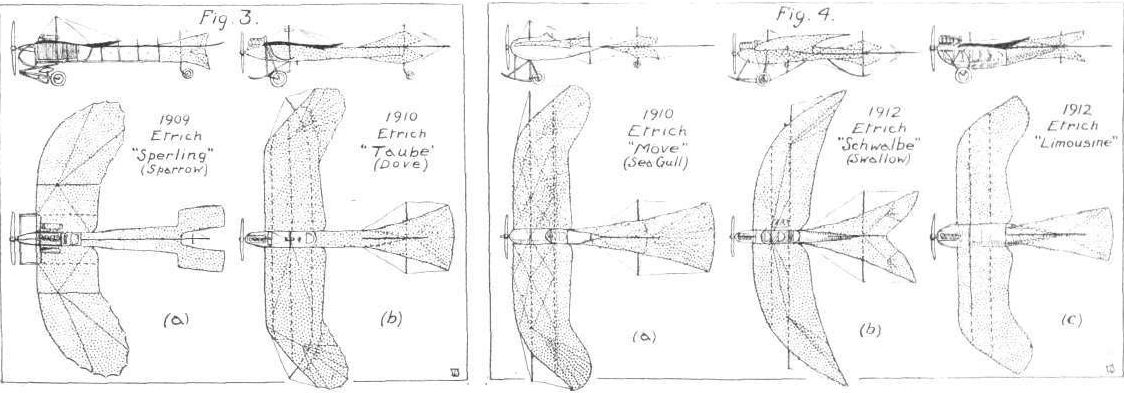
Описание
Страна: Австро-Венгрия
Год: 1912
Журнал Flight
Flight, February 12, 1915.
THE EVOLUTION OF THE ETRICH "TAUBE."
<...>
Another experimental machine was the "Schwalbe" or "Swallow," (b) Fig. 4, built in 1912. The wings of this machine were almost true crescent-shape, the leading edge being curved from tip to tip. They were set at a dihedral angle and upturned at the tips, and the right-hand wing had a small window formed in it close to the body. The flexing elevator-tail was swallow-shape, and had the usual two diamond-shaped rudder-fins above and below it. The body, circular in section, was built up of tubular steel longitudinals and wooden rings, the whole being covered with fabric. In the nose of the body was the 60 h.p. engine, with the radiator immediately behind it. Behind this were three seats, one behind the other, the last being the pilot's. The control consisted of a vertical column and wheel, a backwards and forwards movement of the former operating the elevator, and a rotating of the latter actuating the rudders; no wing warping was employed, the flexibility of the wings alone being relied upon to maintain lateral stability. The chassis consisted of a central skid connected to the body by three pairs of V struts, and a sprung axle carrying a pair of wheels. The "Swallow," which was constructed mostly of steel, had a span of 13.25 m., an overall length of 87 m., weighed 45 kgs., and had a speed of 112 kms. per hour with three up.
<...>
- Журнал Flight
Фотографии
-
Журнал - Flight за 1915 г.
The evolution of the Etrich Taube.
Другие самолёты на фотографии: Etrich Luft-Limousine / VII - Австро-Венгрия - 1912Etrich Sperling - Австро-Венгрия - 1909Etrich Taube - Австро-Венгрия - 1910

